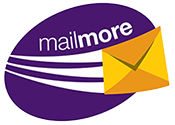Direct Mail Fundraising
In my early days in direct mail over 35 years ago I was Managing Director of a company which sold business books by direct mail. I was really a direct mail beginner, but the company was fortunate to have on its board one of the great direct mail gurus of the business publishing world. At a board meeting I presented what I thought was a really clever headline for a campaign to market a hefty 500 page book on all the complications of running a small business.
My proposed headline was:
“ The big book for small business”.
My guru colleague nearly exploded. “ Get this into your head” he rampaged, “ business owners don’t want a ****** big book! They want to get rich!”.
Lesson learned: Don’t sell the product. Sell the promise of helping the customer achieve an outcome they really want.
In fact, the offer of an outcome the customer (or donor) wants is just one of 7 keys to success in direct mail fundraising. Of the 7, three are of fundamental importance and four are important to implementation.
List, Proposition, Price. The 3 drivers of successful direct mail.
Though each of these elements is dealt with in separate chapters later in this manual, let’s review these briefly now to get the whole picture. The 3 drivers are
- the List,
- the Proposition and
- the Price.
Key no. 1: The list
Face facts, not everyone likes using direct mail. Some absolutely hate it, some tolerate it. But thankfully, many people like it and use it regularly to transact all sorts of things. Being a direct mail user is a vital quality of anyone on a list you propose to use for direct mail. To get direct mail to work you have to target the people who like using the medium. A fundamental mistake is to think that the best people to send your charity direct mail to is a list of people who have expressed interest in the issue you deal with.
To illustrate the point, let me tell you this story. We were invited to talk with a Christian charity which has a highly visual service with very strong and immediate outcomes.
They were struggling to make their direct mail new donor acquisition programme work. Their Director explained that the agency they were using at the time had gone to great lengths to select mailing lists of known Christians who – presumably – would be highly motivated to the cause. But the results were very disappointing – about 0.5% on average. We conducted some tests of their strong proposition to a number of charity direct mail donor lists. None of these lists were of Christian charities, nor were they of charities in the same or any remotely similar line of work. Result: 10 times better – over 5%.
And the lesson here is that recency of giving by direct mail is worth 10 times ( sometimes 20 times) more than any indicator of interest in the type of work the charity does. Most direct mail practitioners agree that the list alone accounts for something like 65% of the result achieved.
